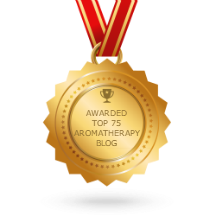Base Oils and Macerates:
More information about some familiar carriers, and information about newer ones in our toolbox.Sweet Almond Oil:
Rich in vitamins, and high in Oleic Acid, which promotes skin absorption. Preferably cold pressed if available, and unrefined. Very helpful for moisture lesions, like diaper rash and other chronic sores. A cooling oil.Avocado Oil:
Helpful for allergic skin, eczema and psoriasis. Good for "stressed skin", ie, under pressure. (My note, wondering if it can help prevent bed sores?)Borage CO2 Extract
High in GLA (gamma linolenic acid), anti-inflammatory. Much longer shelf life than the cold pressed oil, and may be frozen! Excellent for infant's skin care, for extra sensitive skin.Evening Primrose CO2 Extract
High in GLA and in Linoleic Acid. Protective and healing for the skin, very quickly absorbed. Recommended for tight dry skin, in cases of mastitis, lymphedema, etc. Linoleic acid can irritate very sensitive skin. If irritation occurs, dilute with Borage Seed Oil, or discontinue use.Jojoba
Anti-inflammatory! (I didn't know that.) Well absorbed, allows for very slow, longlasting release of added essential oils, leading, perhaps, to longer-lasting symptom relief. Good carrier for all skin types. Helpful for acne.Olive Oil
Good for dry rough skin, cooling. Helpful for itching. Traditional base for macerated oils.Rose Hip Seed CO2 Extract
Excellent carrier for burnt or damaged skin, scarring, ulcers, acne. Very quickly absorbed. Do not use alone because it causes skin to regenerate too quickly and will leave the skin over sensitive. Better to blend with Seabuckthorn Seed oil and Calophyllum inophyllum (Tamanu) for scars. For deep scars blend Rose Hip Seed CO2, with Calophyllum and Helichrysum italicuum to treat deep seated scars in connective tissue. (I have had clients report that Rose Hip oil and Helichrysum helped with deep scar tissue and I was surprised. Here is more evidence. Seems to me this would be an essential post surgical blend.)Sea Buckthorn Seed CO2
Excellent carrier for any pain blend, especially important when treating bed sores, ulcers of any type. Useful for all skincare. Very quickly absorbed. Use at no more than 5% of a blend, as little as 2.5% will be effective. Use with Rose Hip Seed and Calophyllum inophyllum for scarring. Healing for damaged skin and extremely sensitive skin.(Note, this description is for the Seed extract. Madeleine recommends the Sea Buckthorn Pulp for treating mucous membranes. More on that another day.))





No comments:
Post a Comment